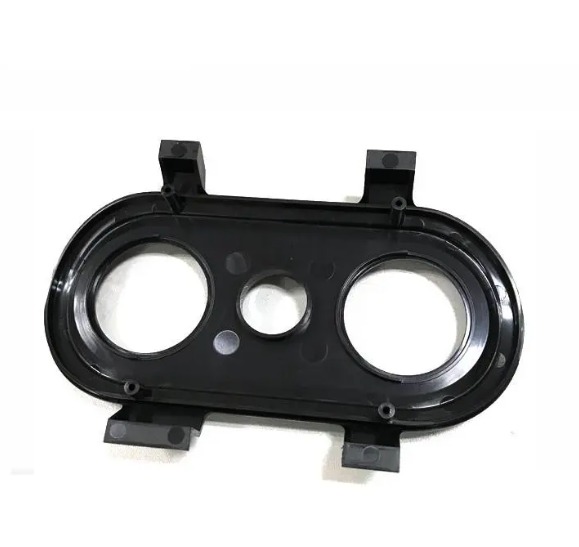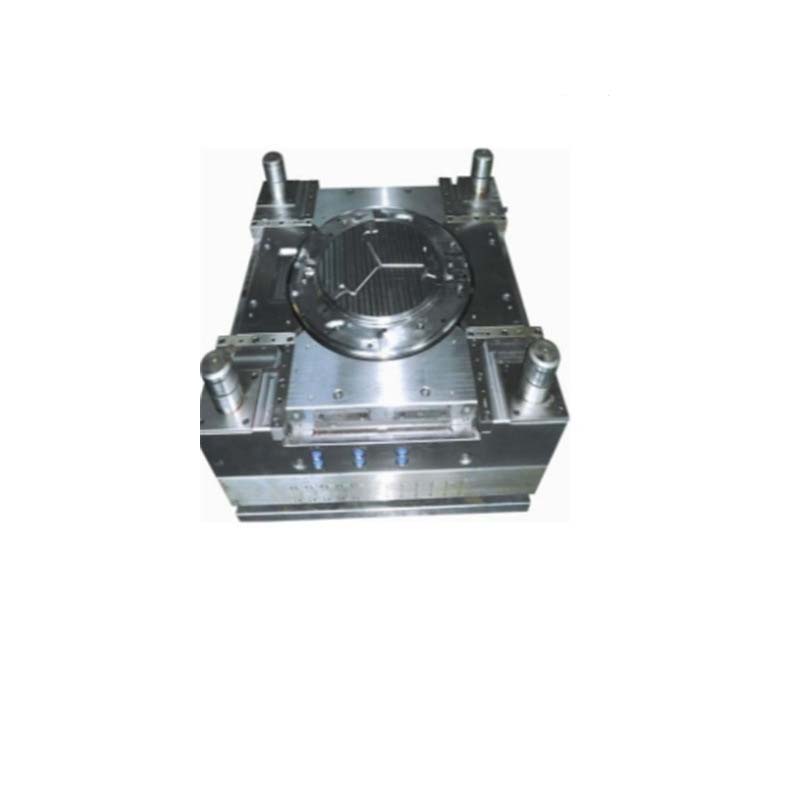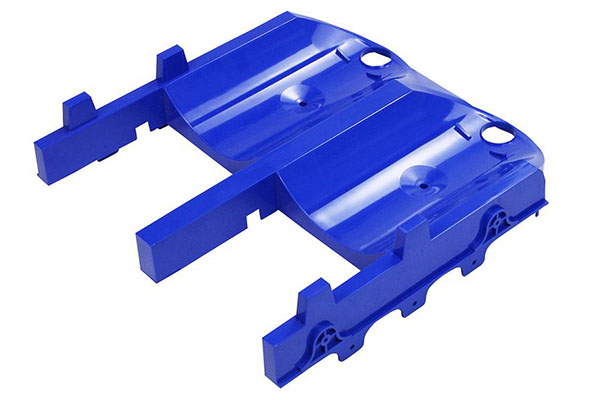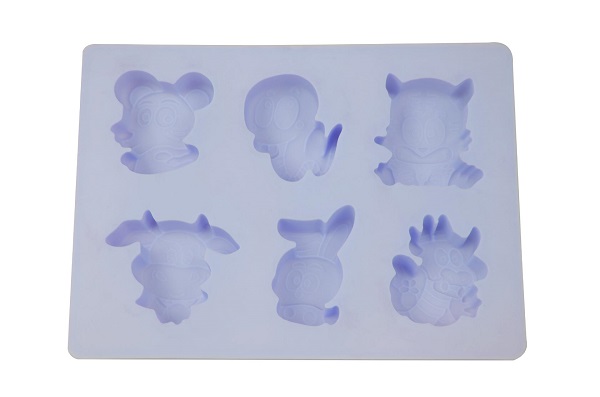1. Introduction to Plastic Molds
In the vast realm of modern manufacturing, plastic products have become an inseparable part of our daily lives, from the smallest household items like toothbrushes to large - scale industrial components. At the heart of the production of these plastic products lies the plastic mold. A plastic mold is a specialized tool designed to shape molten plastic materials into specific forms through various molding processes, such as injection molding, blow molding, and compression molding. It serves as the key enabler for the mass - production of plastic products with high precision and consistency.
Think about the countless plastic bottles that hold our beverages. Each bottle has a unique shape, size, and design. Without plastic molds, creating these bottles with the exact same dimensions and quality in large quantities would be an arduous, if not impossible, task. The importance of plastic molds in the plastic product manufacturing industry cannot be overstated. They are the foundation upon which the diverse world of plastic products is built. In the following sections, we will delve deeper into why plastic molds are so crucial, exploring aspects such as their cost - effectiveness, precision capabilities, and material compatibility.
2. The Fundamental Function of Plastic Molds
2.1 Shaping Precision
Plastic molds are engineered to offer an extraordinary level of shaping precision. Through meticulous design and state - of - the - art manufacturing techniques, they can endow plastic products with exact shapes and dimensions. For instance, in the production of optical lenses made of plastic, the precision requirements are extremely high. A deviation of even a fraction of a millimeter can significantly affect the optical performance of the lens, such as causing image distortion or reduced clarity. Plastic molds can achieve dimensional tolerances as low as ±0.01mm in some high - precision applications. This is made possible by using advanced computer - aided design (CAD) software during the design phase. Designers can create highly detailed 3D models of the mold, precisely defining every curve and dimension. Then, during the manufacturing process, computer - numerical - control (CNC) machines, which are guided by the CAD data, carve and shape the mold with exceptional accuracy.
Another example is the production of micro - electronic components housed in plastic casings. These components often have complex and miniaturized designs. The plastic molds for these casings need to accurately replicate the intricate internal structures and external shapes to ensure a perfect fit for the electronic parts inside and compatibility with other components in the device.
2.2 Consistency in Production
One of the remarkable advantages of plastic molds is their ability to ensure high - level consistency in the production of plastic products. When producing plastic products by hand, there are bound to be variations from one product to another. These variations can be in terms of size, shape, and even surface finish. However, with plastic molds, each product produced is nearly identical to the next.
Studies have shown that in a hand - crafted production process of simple plastic parts, the dimensional variation can be as high as ±1mm. In contrast, when using a well - designed and maintained plastic mold in an injection - molding process, the dimensional variation can be controlled within ±0.1mm. This high level of consistency is crucial for many industries. For example, in the automotive industry, plastic parts such as interior components (like dashboards and door panels) need to be consistent in size and shape so that they can be easily assembled during the vehicle manufacturing process. If there are significant variations in these plastic parts, it can lead to issues such as poor fit, rattling during operation, and even safety concerns. In mass - production lines, the use of plastic molds not only ensures product quality but also improves production efficiency as there is less need for quality control and rework due to inconsistent products.
3. Adaptability to Diverse Plastic Materials
3.1 Different Types of Plastics
The versatility of plastic molds is further demonstrated by their ability to adapt to a wide variety of plastic materials. Some of the most common plastics include polyethylene (PE), polypropylene (PP), polystyrene (PS), polyvinyl chloride (PVC), and acrylonitrile - butadiene - styrene (ABS). Each of these plastics has its own unique set of properties, and plastic molds are designed to accommodate these differences during the manufacturing process.
Polyethylene, for example, is known for its excellent chemical resistance and high - density polyethylene (HDPE) is often used in the production of products like milk jugs and pipes. Plastic molds for HDPE need to be able to handle the high - pressure injection required to shape the material into the desired form. The mold surfaces must also be smooth to prevent the rough - textured HDPE from adhering during the cooling and solidification process.
Polypropylene is another widely used plastic, valued for its high melting point, good mechanical properties, and resistance to fatigue. It is commonly used in automotive parts, household appliances, and packaging. Molds for polypropylene often require a higher temperature during the molding process to ensure the proper flow and solidification of the material. Additionally, due to its tendency to shrink during cooling, the mold design may need to account for this by adjusting the dimensions of the cavity slightly larger than the final product dimensions.
Polystyrene is a relatively brittle plastic with good insulating properties and is often used in the production of disposable food containers, foam packaging, and model kits. Molds for polystyrene usually operate at lower temperatures compared to some other plastics. The mold's surface finish is crucial as it directly affects the smoothness and appearance of the final polystyrene product.
3.2 Customization for Special Plastics
In addition to the common plastics, there are also special - purpose plastics with unique properties. These include high - performance plastics like polyetheretherketone (PEEK), polyimide (PI), and liquid - crystal polymers (LCP). These materials are often used in high - tech applications such as aerospace, medical devices, and electronics due to their exceptional heat resistance, mechanical strength, and chemical stability.
For special plastics like PEEK, which has a high melting point and excellent mechanical properties, plastic molds need to be made from materials that can withstand the high temperatures and pressures involved in the molding process. The mold design may also require special cooling mechanisms to ensure that the PEEK cools evenly and does not develop internal stresses that could affect its performance.
Polyimide, known for its high - temperature resistance and good electrical insulation, requires molds with precise tolerances and high - quality surface finishes. Since polyimide is often used in applications where dimensional accuracy is critical, such as in micro - electronic components, the mold must be able to reproduce the intricate shapes and small features accurately.
Liquid - crystal polymers, with their unique flow properties and high strength - to - weight ratio, demand molds that can control the orientation of the liquid - crystal molecules during the molding process. This may involve the use of specialized gating systems and mold - filling techniques to ensure that the final product has the desired mechanical properties.
In summary, plastic molds are highly adaptable tools that can be customized to work with a wide range of plastic materials, from the common to the highly specialized. This adaptability is a key factor in their importance as a tool for producing plastic products across various industries.
4. Yigu Technology's Viewpoint
As a non - standard plastic metal products custom Supplier, Yigu Technology deeply understands the significance of plastic molds in production. Plastic molds are the cornerstone of transforming design concepts into tangible plastic products. Their precision determines the quality and functionality of the final products.
At Yigu Technology, we place great emphasis on mold technology. Our experienced team of engineers uses advanced CAD/CAM software to design highly customized plastic molds, ensuring they meet the unique requirements of different products. We have extensive experience in handling various molding processes and materials. Whether it's creating molds for small, intricate electronic components or large - scale industrial parts, we have the skills and expertise to deliver high - quality results. Our continuous investment in technology and R&D enables us to stay at the forefront of mold - making, providing our customers with innovative solutions and helping them gain a competitive edge in the market.
FAQ
What are the common types of plastic molds?
Common types of plastic molds include injection molds, blow molds, and compression molds. Injection molds are widely used for producing a variety of plastic products, from small electronic components to large automotive parts. In the injection - molding process, molten plastic is injected into a closed mold cavity under high pressure. For example, the plastic casings of mobile phones are often made using injection molds. Blow molds are mainly used for manufacturing hollow plastic products like plastic bottles. There are different types of blow - molding processes, such as extrusion blow molding and injection blow molding. Extrusion blow molding is commonly used for making larger bottles, while injection blow molding is more suitable for producing smaller, more precise bottles. Compression molds are typically used for molding thermosetting plastics. In this process, the plastic material is placed in the mold cavity, and then heat and pressure are applied to shape and cure the plastic. They are often used in the production of electrical insulators and some types of automotive parts made from thermosetting plastics.
How to maintain a plastic mold?
Proper maintenance of plastic molds is crucial to ensure their longevity and the quality of the plastic products they produce. First, cleaning is essential. After each production cycle, the mold should be thoroughly cleaned to remove any residual plastic, dust, or other contaminants. This can be done using a soft brush, compressed air, or a suitable cleaning solvent. For example, a mild detergent mixed with water can be used to clean the mold surface, but care must be taken not to damage the mold. Second, rust prevention is important. Plastic molds are often made of metal, and they can rust if exposed to moisture. Applying a rust - preventive oil or coating to the mold surface, especially when the mold is not in use for an extended period, can help prevent rust formation. Storing the mold in a dry environment also helps. Additionally, regularly checking and lubricating moving parts of the mold, such as ejector pins and slides, ensures smooth operation. Lubricants should be applied according to the manufacturer's recommendations to reduce friction and wear.
Can plastic molds be reused?
Yes, plastic molds can be reused multiple times under normal maintenance conditions. The number of times a plastic mold can be reused depends on several factors. Material quality is a key factor. High - quality mold materials, such as premium alloy steels, can withstand more production cycles compared to lower - quality materials. For example, molds made of high - grade tool steels can often be used thousands of times. Production conditions also play a role. If the plastic molding process involves high pressures, high temperatures, or abrasive plastic materials, the mold may wear out more quickly. Additionally, maintenance practices have a significant impact. Well - maintained molds, as described in the previous FAQ about maintenance, will have a longer lifespan and can be reused more times. Regular cleaning, proper lubrication, and timely repair of minor damages can extend the mold's usability.








